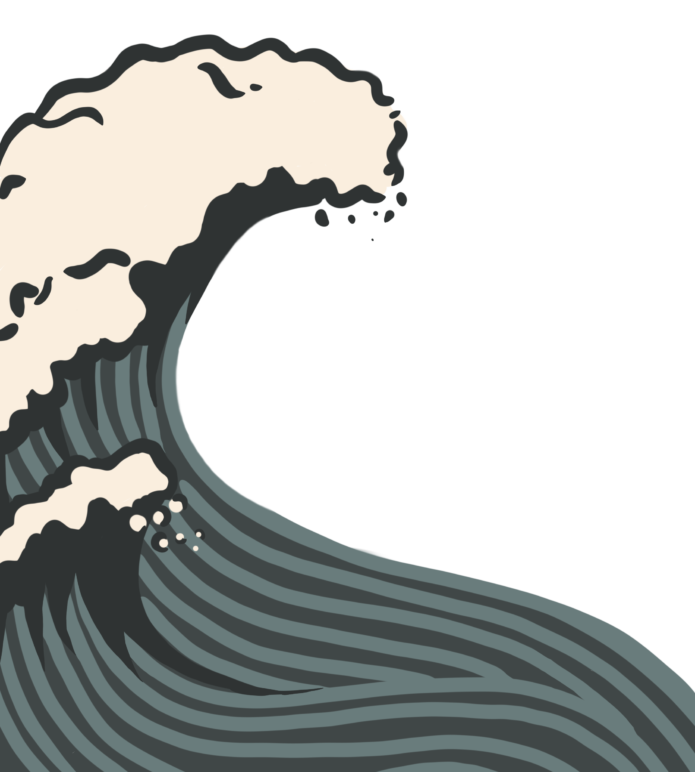Sandwiched halfway between Hawaii and Australia, Kiribati is a Southern Pacific island nation with 33 islands, the most famous being Kiritimati, sporting the title of one of the largest atolls in the world. All of Kiribati’s islands are atolls, which are ring-shaped coral reefs or islands surrounding a lagoon. Kiribati is populated by around 120,000 people and supports itself through fishing in its various biodiverse coral reefs, exporting dried coconuts and breadfruit as well as receiving foreign governmental aid. Barely two meters above sea level, with over 700 square miles of coastline, Kiribati was on its way to becoming the next popular retreat destination for globetrotting travelers. Instead, climate change is perniciously impacting the island with rising sea levels and increased soil erosion.
Negative repercussions such as heightened levels of flooding, freshwater contamination and food scarcity are often understated when bundled under the term “sea level rise.” Although, according to an article from The Conversation, the three to five millimeter increase in sea level each year for the past 40 years has not seemingly shown substantial effects on Southern Pacific islands, yet sea level rise itself correctly represents the greatest risks these islands will have to face in the near future as sea level rise intensifies other adverse effects of climate change. The deepening fragility of the environment caused by climate change related events gives growing importance to human interactions with the ecosystem.
Michael Urban, associate professor at the Department of Geography at the University of Missouri—Columbia and former official observer for the American Association of Geographers at the United Nations Framework Convention on Climate Change, said sea level rise causes small levels of inundation in low-lying areas, or nuisance flooding. While not putting anyone at immediate risk, nuisance flooding creates expensive damages and jeopardizes freshwater resources in these islands by negatively affecting their viability through compromised infrastructure and road closures.
“One of the biggest threats is really the damage [climate change] causes and sea level rise will cause to freshwater resources on these islands,” Urban said. “So some of these islands have very thin groundwater resources. That’s where their freshwater comes from, and you need fresh water in order to have vegetation on the island [and] in order to have any kind of agriculture on the island.”
The irony of being surrounded by water on an island, Urban said, is that it is not usable. Saltwater seeping into groundwater from above and bubbling up from below damages agriculture and contaminates the freshwater reserves, causing these island nations to build water tanks for preservation.
Senior Grace Schondelmeyer, president of RBHS Conservation Club, said hurricanes and accelerated flooding enhance the impacts of climate change, especially in island nations where there is no mainland to migrate to as sea levels rise.
“This [sea level rise] puts island nations at an even greater risk to the impacts of climate change,” Schondelmeyer said. “The economic cost of the effects of climate change, especially for islands that are already struggling economically, is going to continue increasing if we don’t see drastic changes made.”
The western Pacific Ocean has experienced sea level rises two to three times greater than the global average, leading to almost 0.3 meters of net rise since 1990. Additionally, a high surf event in Dec. 2008 overwashed numerous atolls in Micronesia, devastating freshwater supplies and agriculture on 60% of the inhabited islands. Natural disasters such as this exacerbate the living conditions of the residents of these islands, but with countries like Kiribati contributing to just 0.6% of the world greenhouse gas emissions, they are not the root cause of the problem.
“There [are] probably two main causes of sea level rise, and one is increasing meltwater delivering additional water resources into the ocean basins themselves. The other element, that is also very significant as far as sea level rise, is […] thermal expansion of water,” Urban said. “So one of the things that we know is that if you take the same amount of water, the same volume of water, and you heat it up so it [that] becomes a lot warmer, the volume increases. So you’re not actually adding any water, but you’re [going to] have a rise in elevation—sea level elevation—simply because you’re heating it up.”
According to Urban, each country handles climate change differently, and much of it is related to international and internal political pressures. Although China was responsible for 80% of the world’s solar panel production in 2019, the nation accounted for 28% of global carbon emissions the same year, making it the top emitter that year. Additionally, though renewable energy is the fastest-growing energy source in the U.S. with its use increasing 100 percent from 2000 to 2018, the nation was accountable for 15% of global carbon emissions in 2018. President Joe Biden appointed former Secretary of State John Kerry to lead climate policies and re-enrolled the country into the Paris Agreement after former President Donald Trump formally withdrew the nation from the agreement last November. Though Biden and Kerry wish for more climate regulation, internal pressure is placed upon them by Congress members, who do not all agree with the two politicians’ views.
“While it is not possible to completely cut off the use of fossil fuel combustion, there are certainly ways that we can lessen the amount of greenhouse gases being emitted to prevent further damage and also to mitigate the impacts of climate change,” Schondelmeyer said. “Global cooperation would get us the furthest, but for that to happen, the U.S. has to be on board with the climate movement.”
With limited resources, adapting to current conditions is not always the most convenient or economical option for island nations. Individual steps can only go so far in these countries with their already low emission rates, so the use of and participation in climate mitigation through international platforms like the United Nations or European Union helps bring climate change forward as an issue that is affecting people now rather than a future issue for the nations most liable for climate change.
“Everybody needs to be in on this together,” Urban said. “We need to take action and we need to take action relatively quickly. Because the cause for global warming, which is what manifests itself regionally as climate change, […] is increased amounts of greenhouse gases in the atmosphere, the only real way to solve it is to reduce the amount of greenhouse gases in the atmosphere.”
How has climate change affected your day-to-day life? Let us know in the comments below.


















































































